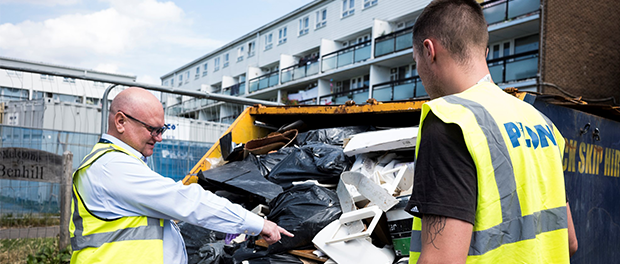How to better communicate the impact of sustainable practices in construction
 By Andrew Cameron.
https://andrew-cameron.com/
By Andrew Cameron.
https://andrew-cameron.com/
Government figures state that the construction sector generates around 50m tonnes of CO2 each year and is responsible for 60% of all UK waste. Contracting authorities have been tasked with reducing GHG emissions by 68% by 2030 compared to 1990 levels, 78% by 2035, and achieving net zero carbon by 2050; a huge undertaking when faced with the need to build 1.5 million new homes and retrofit millions more.
In an industry where sustainability targets are both ambitious and essential, effective communication is key to driving change. Communicating sustainability objectives to a diverse and multi-cultural workforce is a challenge, particularly when English is a second language for many.
This is where photography and visual communication can make a difference.
We read text at about three words per second, and that assumes you have a good grasp of English, if you don’t, it can take a lot longer. By contrast, photography is universally understood, and our brains can interpret a photograph in milliseconds, this is called the picture superiority effect. What’s more is that we can create emotion and connections with photographs that are more complex to achieve with words alone.
PiLON is a main contractor to the social housing sector and has been on its own net zero journey for the past six years. PiLON is addressing sustainability through design, procurement and behaviour. The business recognises that English is not the first language for many of its employees and contractors, which has meant that behavioural change on-site has been challenging. One area that the whole sector can focus on is waste, and whilst recycling of construction waste is now a fine art it comes with a carbon cost.
“What we set out to do was focus on reusing materials and reducing plastic waste,” says Vlad Nedelcu, Managing Director at PiLON. “We retrofit, conduct electrical testing, and refurbish properties, which often involves covering floors with sheeting and removing old fixtures and fittings using sacks. We knew that simple changes in behaviour could help reduce waste, carbon, and operational costs.”
Sid Clark, Sustainability Lead at PiLON, adds, “Although some sites exceeded expectations after we shared our sustainability plan, the results were inconsistent. That’s when we turned to photography.”
When people saw images of their colleagues acting in a certain way, they followed. The images were relatable, they were real sites, with people wearing the same PPE that they themselves wore. The messages came across as peer-to-peer rather than top-down, it was like colleagues talking to each other and sharing information.
“We have seen more engagement and will continue with image-led communications throughout 2025.” Says Sid Clark.
Photography is a universal language that transcends barriers, creating immediate and emotional connections. By using relatable, image-led communication, companies like PiLON have demonstrated how visual storytelling can foster understanding, encourage behavioural shifts, and helps to deliver progress towards sustainability objectives.


